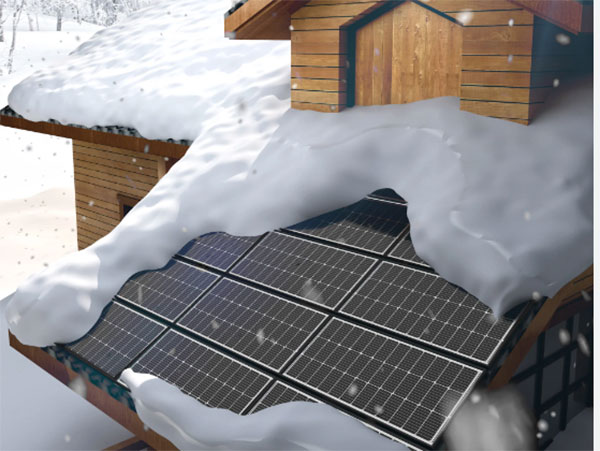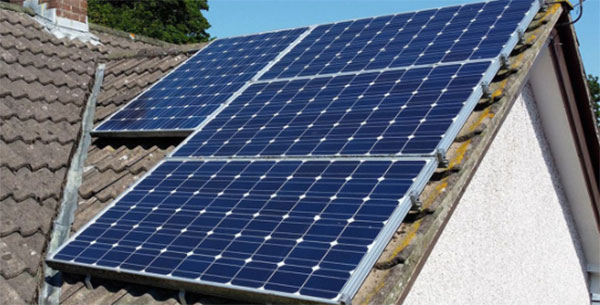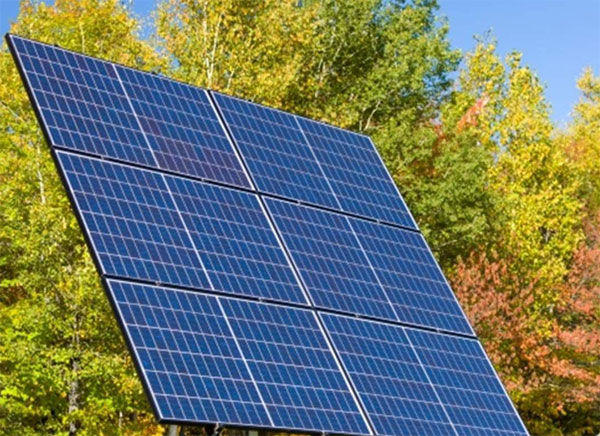Description
To add more solar panels, assess existing system capacity, select compatible panels, ensure structural integrity, and upgrade inverters if necessary.

Assessment of Existing Solar Panel System
The initial step in adding more solar panels involves a comprehensive assessment of the existing solar panel system. This assessment focuses on evaluating the system's current capacity and performance, identifying its expansion potential, and determining the compatibility with additional solar panels.
Evaluating Current Capacity and Performance
Evaluating the existing solar panel system starts with measuring its current energy output. This involves analyzing the system's power generation statistics, often available through the inverter's monitoring platform. Technicians examine key performance indicators like peak power output (measured in kilowatts, kW) and energy production efficiency (measured in kilowatt-hours, kWh). A detailed analysis of performance trends over time, such as seasonal variations and daily output patterns, provides insights into the system's operational health.
Identifying Potential for Expansion
This phase involves a site-specific assessment to determine the physical space available for additional solar panels. Technicians measure roof or land area, taking note of dimensions and orientations that affect solar exposure. They also evaluate the structural integrity of the mounting locations, ensuring they can support extra panels. A crucial aspect is reviewing the electrical infrastructure, including the capacity of existing inverters and the possibility of integrating more panels without significant upgrades.
Compatibility with Additional Solar Panels
Ensuring compatibility with new panels is a critical aspect of the assessment. This involves matching the electrical specifications of new panels with the existing setup. Key parameters like voltage, power tolerance, and panel size are essential to maintain system balance and efficiency. The quality and material of new panels, such as monocrystalline or polycrystalline silicon, significantly impact the system's overall performance and longevity, typically ranging from 25 to 30 years. Additionally, the assessment considers the cost implications, budget requirements, and potential return on investment (ROI) of the expansion.

Planning and Design for Expansion
The planning and design phase is pivotal for the successful expansion of a solar panel system. It involves selecting suitable solar panel models, calculating the potential additional energy production, and meticulously planning the spatial arrangement of the new panels.
Selecting Suitable Solar Panel Models
Choosing the right solar panels is crucial for system compatibility and efficiency. Key factors include:
- Power Output: New panels should ideally match or exceed the existing ones, typically ranging from 250 to 400 watts per panel.
- Efficiency: High-efficiency panels, usually with a 15%-20% conversion rate, are preferred to maximize energy production in limited spaces.
- Size and Dimensions: Panel size should fit the available space. Common residential panels measure about 1.6 by 1 meter.
- Material and Quality: Options include monocrystalline or polycrystalline panels. Monocrystalline panels, though more expensive, offer higher efficiency and a sleeker look.
- Cost: Budget considerations should balance initial investment with long-term returns. Prices can range from $0.70 to $1.50 per watt.
Calculating Additional Energy Production
Estimating the additional energy production involves:
- Analyzing Sunlight Exposure: Using tools like solar pathfinders to assess the sun exposure of the proposed installation area.
- System Size Expansion: A system expanding from 5kW to 10kW can nearly double its energy production, under optimal conditions.
- Energy Yield Estimation: Factoring in local climate, panel orientation, and tilt angle to predict the energy yield, often measured in kWh per year.
Spatial Planning for Additional Panels
Effective spatial planning ensures optimal installation and performance:
- Roof Analysis: Assessing roof integrity and space for the additional weight and coverage of new panels.
- Layout Design: Arranging panels to avoid shading and maximize sun exposure throughout the day.
- Accessibility: Ensuring safe and convenient access for maintenance and repairs.

Technical Considerations for System Integration
Integrating additional solar panels into an existing system involves several technical considerations. This process ensures the upgraded system operates efficiently and safely. Key aspects include upgrading inverters and controllers, ensuring electrical and structural compatibility, and strategies to maximize efficiency with both new and old panels.
Upgrading Inverters and Controllers
An inverter is crucial for converting the DC power generated by solar panels into AC power for home use. With the addition of more panels, the inverter may need an upgrade to handle the increased power output.
- Assessing Inverter Capacity: Current inverters might operate efficiently for systems up to 5 kW, but adding more panels often requires higher capacity inverters, possibly up to 10 kW or more.
- Compatibility with New Panels: Ensuring the inverter matches the voltage and current specifications of the new panels.
- Advanced Features: Modern inverters come with features like MPPT (Maximum Power Point Tracking) for optimal performance.
Electrical and Structural Compatibility
Ensuring the new panels integrate seamlessly with the existing system is vital for both electrical and structural integrity.
- Electrical Wiring and Connectors: Upgrading wiring to handle additional current and ensuring proper connectors are used to avoid electrical losses.
- Structural Assessment: Examining the roof or mounting area for the ability to bear additional weight and ensuring compliance with local building codes.
- Safety Measures: Including proper grounding and overvoltage protection.
Maximizing Efficiency with New and Old Panels
Combining new and old solar panels requires careful planning to ensure system efficiency.
- Matching Panel Characteristics: Aligning the electrical characteristics of new panels with the old ones to prevent efficiency losses.
- Arrangement and Orientation: Strategically placing new panels to avoid shading and maximize sunlight exposure.
- Regular Maintenance: Ensuring all panels, new and old, receive regular maintenance for optimal performance.

Installation Process
The installation process of additional solar panels is a critical phase that requires meticulous planning and execution. This section outlines a step-by-step guide to installing additional panels, highlights safety procedures and best practices, and addresses common installation challenges.
Step-by-Step Guide to Installing Additional Panels
- Site Preparation:
- Clear the area of any debris or obstacles.
- Ensure the roof or ground is structurally sound.
- Mounting System Installation:
- Install mounting brackets, ensuring they are properly aligned and secured.
- For roof installations, confirm the brackets are sealed against water leakage.
- Panel Installation:
- Carefully place the solar panels on the mounting system.
- Secure the panels in place, ensuring they are evenly spaced and aligned.
- Electrical Connections:
- Connect the panels to the inverter using appropriate gauge wires.
- Ensure all connections are tight and weatherproof.
- System Integration:
- Integrate the new panels into the existing electrical system.
- Double-check all connections and ensure compliance with electrical codes.
- Final Inspection and Testing:
- Inspect the installation for any issues.
- Test the system to ensure it is functioning correctly.
Safety Procedures and Best Practices
- Use of Protective Gear: Always wear safety harnesses, gloves, and eye protection.
- Adherence to Electrical Safety Standards: Follow all electrical safety guidelines to prevent accidents.
- Awareness of Heights: When working on roofs, use ladders and scaffolding safely.
Troubleshooting Common Installation Challenges
- Mismatched Panel Outputs: Ensure all panels have compatible power ratings to avoid inefficiencies.
- Improper Panel Orientation: Adjust the tilt and direction for maximum sun exposure.
- Inverter Overload: Upgrade the inverter if the added panels exceed its capacity.

System Testing and Commissioning
After the installation of additional solar panels, the final step is system testing and commissioning. This phase ensures the expanded system operates efficiently and meets the expected performance criteria. It involves a series of detailed checks and calibrations.
Ensuring Optimal Functioning
- Initial Power Output Check: Measure the immediate power output after installation to ensure it matches the expected increase. For example, if the system expanded from 5 kW to 8 kW, the output should reflect this increase.
- Connection Verification: Double-check all electrical connections for safety and efficiency.
- Inspection of Mounting and Wiring: Ensure that all panels are securely mounted and that wiring is properly insulated and routed.
Calibration of System for Increased Capacity
- Inverter Settings Adjustment: Modify the settings of the inverter to handle the increased capacity. This might involve adjusting the maximum power point tracking (MPPT) parameters.
- Balance of System (BoS) Components Check: Ensure all system components, including charge controllers and batteries (if applicable), are calibrated for the new system size.
- Software Updates: Update any system monitoring software to reflect the new configuration and capacity.
Monitoring Performance Post-Expansion
- Short-Term Performance Tracking: Monitor the system for a few days to a few weeks to ensure it operates as expected. Key metrics include daily energy production and peak power output.
- Long-Term Efficiency Analysis: Over months, compare the performance data with the pre-expansion data to assess the efficiency improvements. This could involve analyzing kWh production per day and checking for any significant deviations.
- Maintenance Scheduling: Adjust the maintenance schedule based on the new system size and output. For example, larger systems might require more frequent checks.

Maintenance and Upkeep
Proper maintenance and upkeep are crucial for the longevity and efficiency of an expanded solar panel system. This comprehensive guide covers routine maintenance for the expanded system, long-term performance tracking, and strategies for upgrading and replacing components as necessary.
Routine Maintenance for Expanded System
Regular maintenance ensures the system operates at peak efficiency and prevents long-term issues.
- Panel Cleaning: Clean the panels every 6 months to maintain optimal light absorption. In dusty areas, more frequent cleaning may be necessary.
- Inspecting Connections: Bi-annual checks of all electrical connections for signs of wear or corrosion.
- Inverter and Controller Check: Annual inspection of the inverter and charge controllers to ensure they are functioning correctly.
- Structural Inspection: Regularly check mounting systems and supporting structures for integrity and stability.
Long-Term Performance Tracking
Monitoring the system's performance over time helps in identifying potential issues early.
- Data Logging: Use monitoring systems to track daily, monthly, and yearly energy production.
- Performance Comparison: Regularly compare current performance data with historical data to identify significant deviations.
- Efficiency Analysis: Analyze efficiency metrics like kWh produced per kW of installed capacity to assess if the system is performing as expected.
Upgrading and Replacing Components as Necessary
Keeping the system up-to-date ensures optimal performance and longevity.
- Inverter Upgrades: Replace inverters every 10-15 years, or as needed, to ensure they match the evolving technology and system size.
- Panel Replacement: Solar panels typically have a lifespan of 25-30 years. Monitor for signs of aging or degradation and plan for eventual replacement.
- Technology Updates: Stay informed about advancements in solar technology to identify potential upgrades, such as more efficient panels or smarter monitoring systems.









